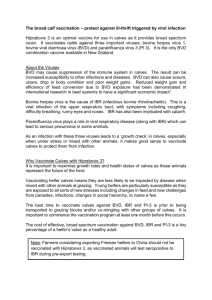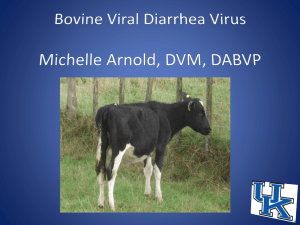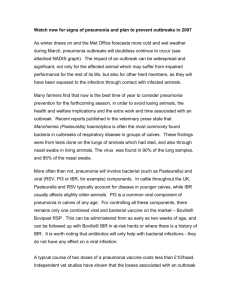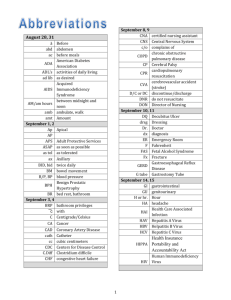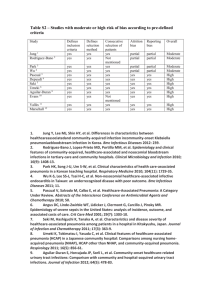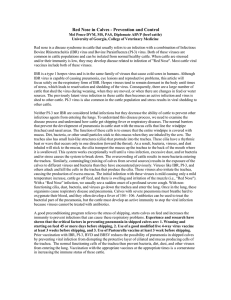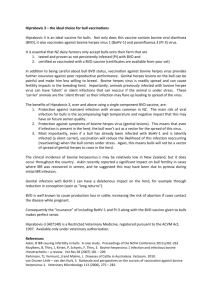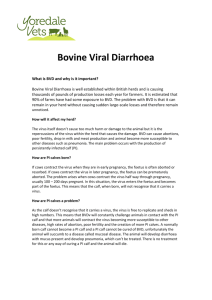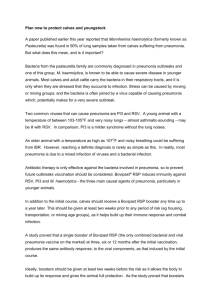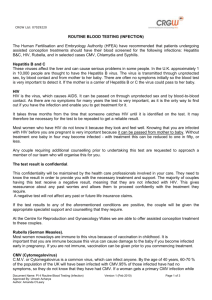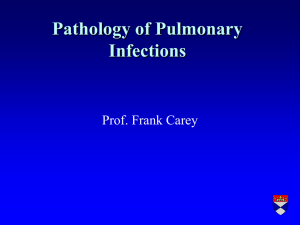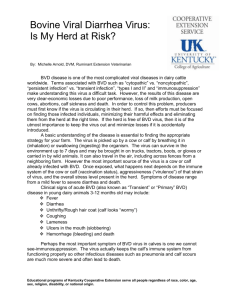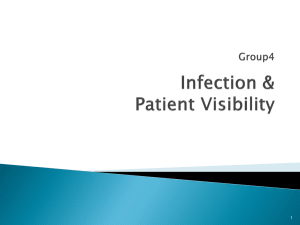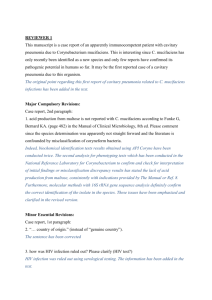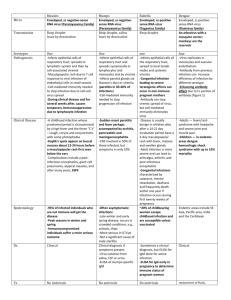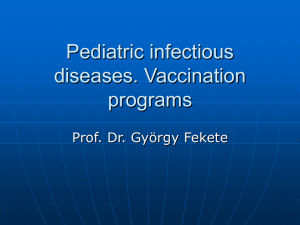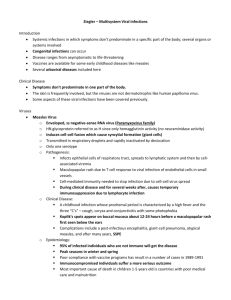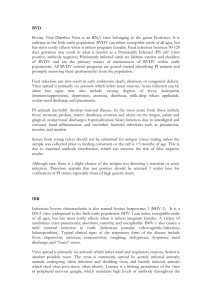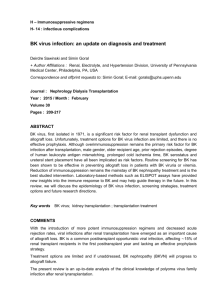Pneumonia of calves
advertisement
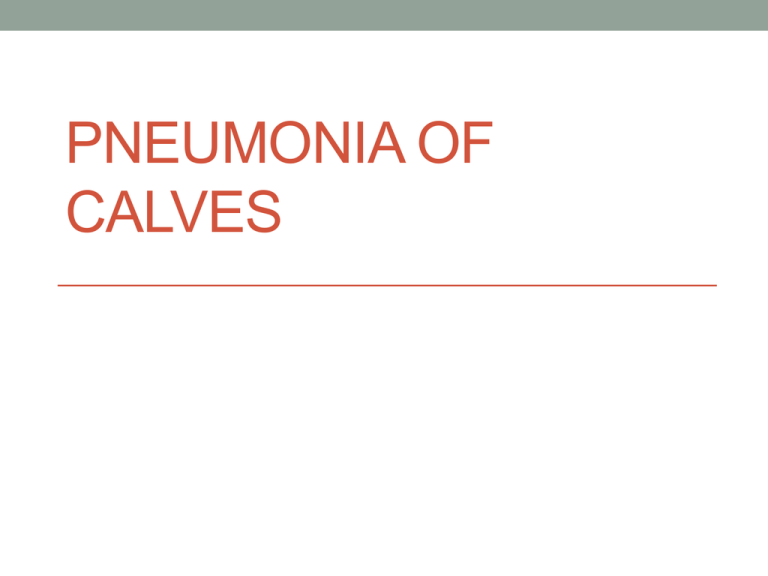
PNEUMONIA OF CALVES Definition • it is multifactorial respiratory disease of calves caused by different types of virus and characterized by variable degree of severity of pneumonia. Etiology: • virus agents: • respiratory syncytial virus, parainfluenza 3, Rhinovirus, Adenovirus, BVDv and Herpes virus. Reovirus, • Bacterial agents. Pneumonia of calve may be complicated with secondary bacterial infections such as Chlamydia sp, Mycoplasma sp, Mannheimia haemolytica, Streptococcus pneumonia, Corynebacteria bovis and E.coli • Environmental factors: • The disease is often associated with low environmental temperatures and a high humidity It is thought that the cold may allow infection to flare up partly by affecting the respiratory defence. Housing of calves in close pox help in transfer of infection. Epidemiology: • Distribution: widely spread and present in Egypt. • Animal susceptibility: The disease is most common in young calve of 2-5 M of age and young cattle. • Seasonal incidence: winter months with bad management in calve housing. • Mode of transmission: • The source of infection is nasal discharge of clinical infected animal and the infection can be transmitted through inhalation of aerosol infection. Clinical signs • IP is varies and morbidity rate reach 100% while the mortality rate is less than 30%. • Acute form: • Several animals will usually become sick within the next 24–48 hours. There is normally a reduction in feed intake of the group and widespread coughing will be apparent. • a mucoid or mucopurulent oculo-nasal discharge, tachypnoea (respirations are usually over 40 per minute), dyspnoea and hyperpnoea are normally present • Chronic form: • The condition is one of gradual onset. It may have a slight mucoid or mucopurulent oculonasal discharge. The temperature is normal or slightly raised at 38.5–39.5 C. There is a dry, explosive cough that is usually produced singely. Postmortem lesions: • There is localized consolidation particularly of the cranial lobes of lung and the tissue is dark red, friable and there is no gross evidence of necrosis. • The lesion present after bacteria infection are differ according to type of bacteria as pasteurella sp. and mycoplasma sp cause extensive heptaization with mottled and red and gray lobules and fibrinous pleurisy. Diagnosis • field diagnosis: based on history and epidemiology of disease, signs of pneumonia and postmortem lesions. • Laboratory diagnosis: • virus isolation on cell cultures. • serological examination: ELISA, FAT, SNT and HI tests. • Histopathological findings. Treatment: • Several antibiotics are of use, including tylosin at 4–10mg/kg body weight, spiramycin at a dose of 20mg/kg body weight • Expectorants. One drug used at present as a spasmolytic is bromhexine hydrochloride, which can be given orally or by intramuscular injection at a dose of about 0.5 mg/kg body weight for five to seven days. • Corticosteroids. The drugs commonly in use today include dexamethasone, prednisolone. Control: Early detection and diagnosis of the disease and isolation of infected one. Suspected cases should be isolated and received symptomatic treatment • Proper management • Vaccination • Combined inactivated respiratory virus vaccines (pneumo 3 and pneumo 4) • The pneumo 3 vaccine contains BVD, IBR, PI-3. The pneumo 4 vaccine contains BVD, IBR, PI-3, and adenovirus. They are used I/M injection in 2 doses 5 ml/calf for each with 2 week apart • Cattle Master 4 vaccine (IBR, BVD, PI-3 and RSV) I/M injection of 2 ml in 2 doses with 2-4 weeks apart • .
